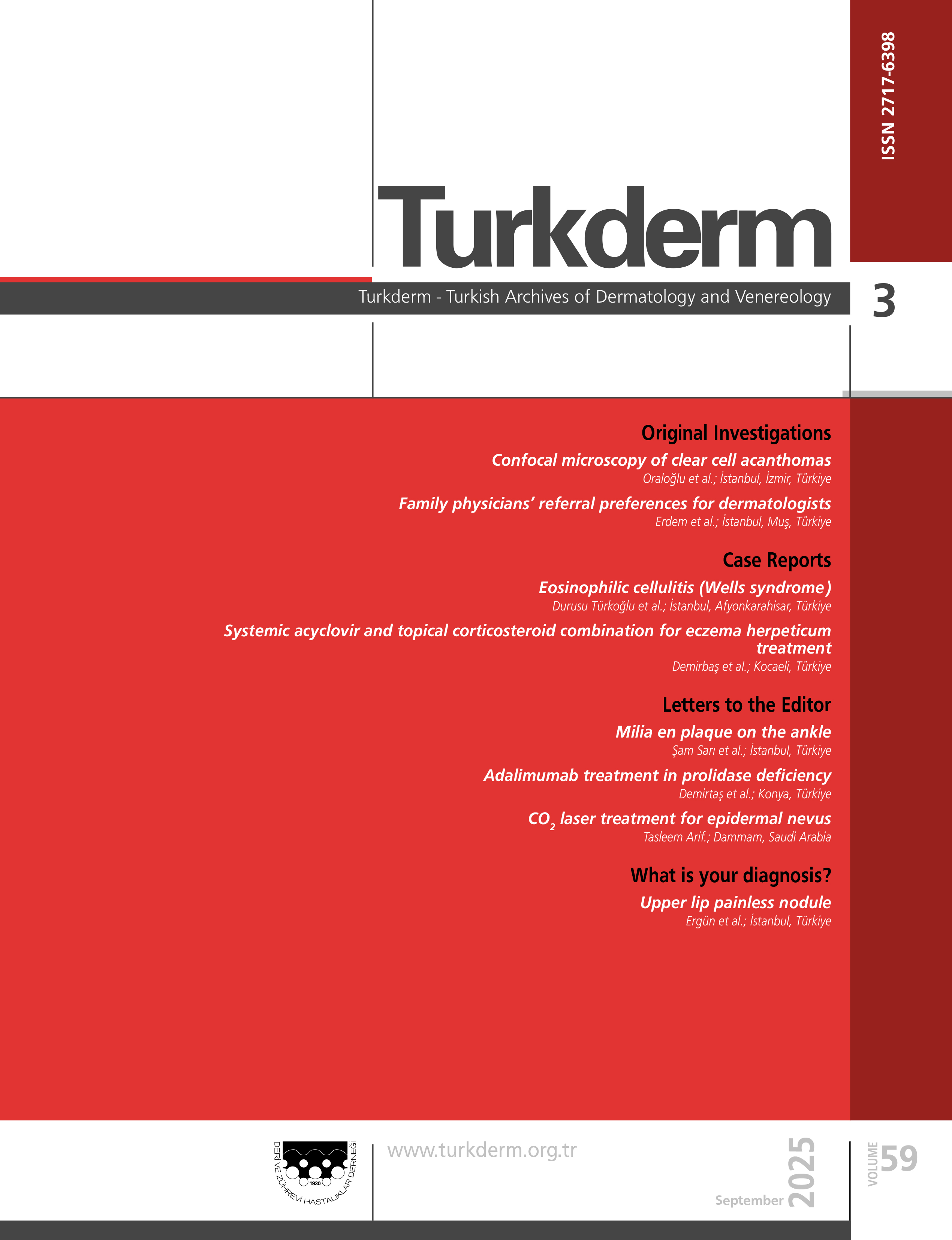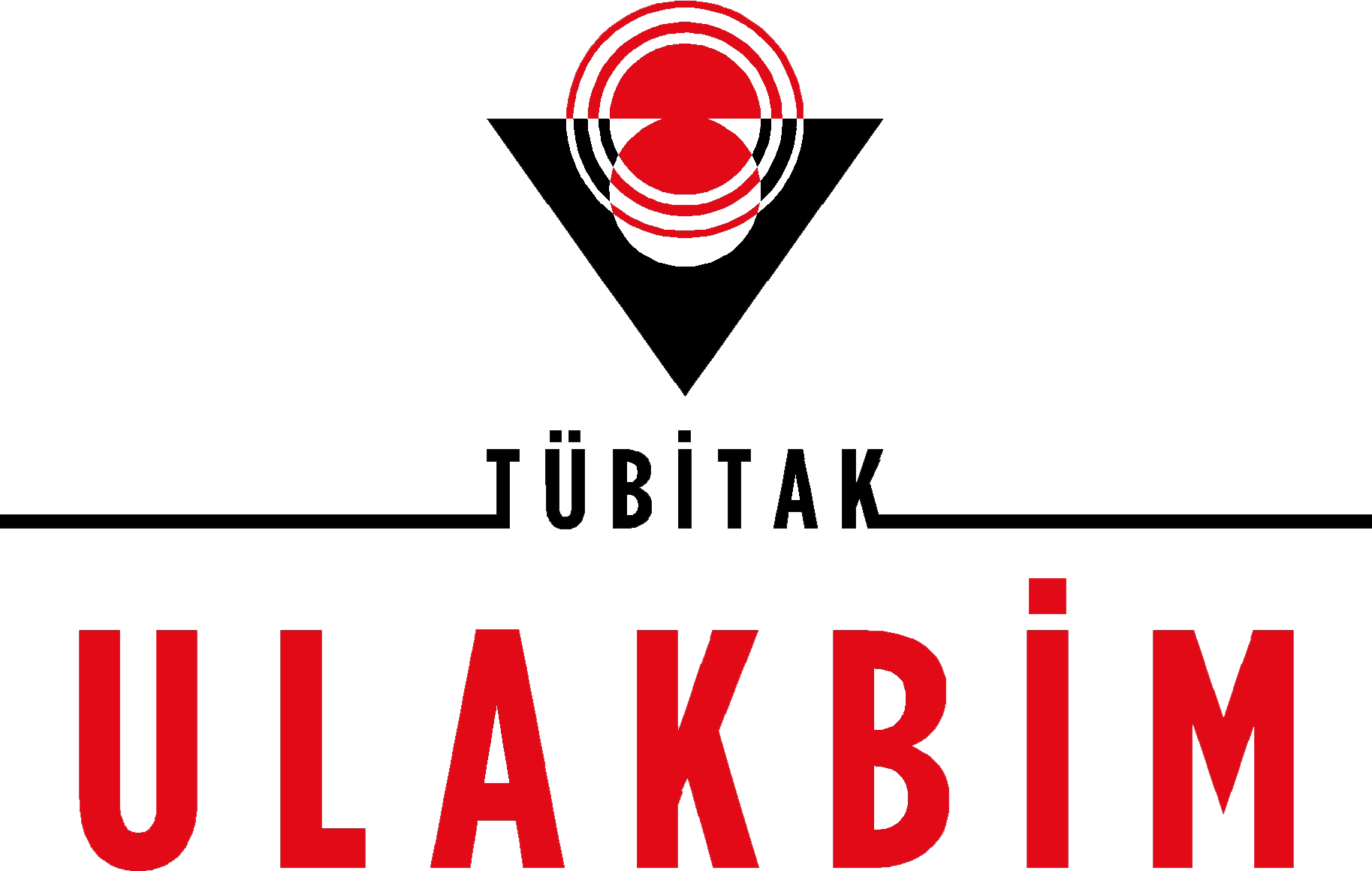Clinicopathological analysis of patients diagnosed with DRESS
Burçin Cansu Bozca1, Anıl Alpsoy2, Asli Bilgiç1, Cumhur İbrahim Başsorgun2, Betül Ünal2, Erkan Alpsoy11Akdeniz University Faculty of Medicine, Department of Dermatology and Venereology Department, Antalya, Türkiye2Akdeniz University Faculty of Medicine, Department of Pathology, Antalya, Türkiye
Background and Design: Drug reaction with eosinophilia and systemic symptoms (DRESS) is an uncommon, but potentially fatal, adverse drug reaction. Despite the alarming statistics regarding morbidity, mortality, and hospitalizations, epidemiological data on DRESS are insufficient. In this investigation, we sought to determine the etiology, clinicopathological characteristics, and prognosis of DRESS cases at our institution.
Materials and Methods: In this retrospective, single-center study, 23 patients with DRESS examined between January 2014 and September 2020 were included according to the European Registry of Severe Cutaneous Adverse Reactions (RegiSCAR) scoring system. Patients were examined between January 2014 and September 2020. Descriptive statistics, Shapiro-Wilk test, Kolmogorov-Smirnov test, Mann-Whitney U test, Pearson chi-square test, and Fishers exact test were performed.
Results: The most frequently detected culprit drug category was anticonvulsants. Maculopapular eruption (100%) and elevated liver function tests (82%) were the most prevalent cutaneous and laboratory findings, respectively. Patients with elevated liver enzymes were more likely to exhibit facial erythema/edema and lymph node enlargement than those without (p=0.021 and p=0.103, respectively). The predominant pathological features were sparse vacuolization of the dermal-epidermal junction and superficial perivascular lymphohistiocytic inflammation with eosinophils. Two patients died during the period of follow-up, three patients were lost to follow-up, and eighteen patients recovered completely.
Conclusion: Our research demonstrated that facial erythema/edema and lymph node enlargement are more prevalent in patients with elevated liver enzymes. Cyclosporine may be a treatment option in the fragile age group to prevent systemic corticosteroid complications. Early diagnosis and treatment that balances benefits and risks remain the most important determinants of prognosis
DRESS tanılı hastaların klinikopatolojik analizi
Burçin Cansu Bozca1, Anıl Alpsoy2, Asli Bilgiç1, Cumhur İbrahim Başsorgun2, Betül Ünal2, Erkan Alpsoy11Akdeniz Üniversitesi Tıp Fakültesi, Deri ve Zührevi Hastalıklar Anabilim Dalı, Antalya2Akdeniz Üniversitesi Tıp Fakültesi, Patoloji Anabilim Dalı, Antalya
Amaç: Eozinofili ve sistemik semptomlarla birlikte görülen ilaç reaksiyonu (DRESS), nadir görülen ancak yaşamı tehdit eden bir advers ilaç reaksiyonudur. Morbidite, mortalite ve hastaneye yatışlarla ilgili endişe verici istatistiklere rağmen, DRESS ile ilgili epidemiyolojik veriler hala yetersizdir. Bu çalışmada merkezimizde DRESSli olguların etiyolojisi, klinikopatolojik özellikleri ve sonuçlarını değerlendirmeyi amaçladık.
Gereç ve Yöntem: Bu retrospektif, tek merkezli çalışmaya, Ocak 2014 ile Eylül 2020 arasında muayene edilen, olası ve/veya kesin DRESS tanılı 23 hasta, Avrupa Şiddetli Kutanöz Yan Etkiler Kayıt Sistemi (RegiSCAR) skorlama sistemine göre dahil edildi. İstatistiksel yöntem olarak tanımlayıcı istatistikler, Shapiro-Wilk testi, Kolmogorov-Smirnov testi, Mann-Whitney U testi, Pearson ki-kare testi ve Fisherin kesin testi kullanıldı.
Bulgular: Etiyolojide en sık saptanan ilaç kategorisi antikonvülzanlardı. En sık görülen kutanöz ve laboratuvar bulguları sırasıyla makülopapüler döküntü (%100) ve karaciğer fonksiyon testlerinde yükselme (%82) idi. Yüzde eritem/ödem ve lenfadenopati, karaciğer enzimleri yüksek olan hastalarda olmayanlara göre daha sık saptandı (sırasıyla; p=0,021 ve p=0,103). Dermal-epidermal bileşkede seyrek vaküolizasyon ve eozinofillerle yüzeyel perivasküler lenfohistiyositik enflamasyon ana patolojik özelliklerdi. Takip süresi boyunca 18 hasta tamamen iyileşirken, iki hastada ölüm görüldü ve üç hasta takipten çıktı.
Sonuç: Çalışmamız fasiyal eritem/ödem ve lenfadenopatinin karaciğer enzimleri yüksek olan hastalarda daha sık görüldüğünü göstermiştir. Siklosporin, kırılgan yaş grubunda sistemik kortikosteroid komplikasyonlarını önlemek için bir tedavi seçeneği olabilir. Erken teşhis ve fayda-zarar dengesi gözetilerek uygulanan tedavi hala sonucu etkileyen en önemli faktörlerdir.
Manuscript Language: English























